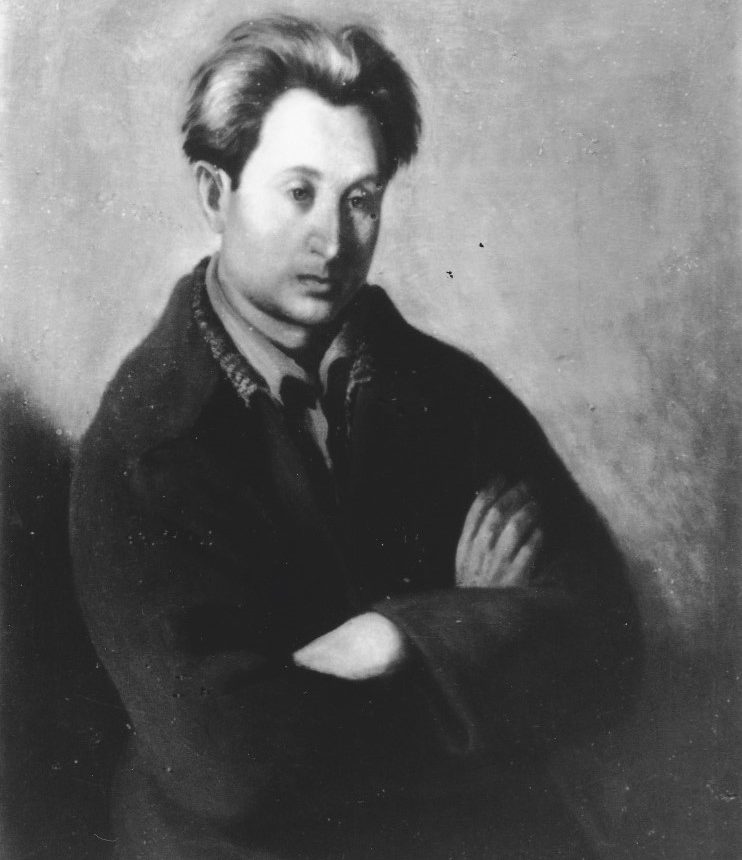Ephraim MANDELBAUM
January 3, 2019Louis MARCOUSSIS
January 3, 2019MANÉ-KATZ (born Emmanuel Katz)
KREMENCHUG (UKRAINE) 1894 – TEL AVIV 1962
Mané-Katz spent his childhood in a religious atmosphere, which left a deep mark on him and permanently influenced his work. His father was a shamasch (watchman of the synagogue). Following his studies at the School of Fine Arts in Kiev and in Vilnius, he arrived in Paris in 1913 with just twenty-five rubles on him. He studied painting in the studio of Cormon at the Ecole des Beaux-Arts, together with Soutine, Krémegne, and Kikoine. In 1914, he was not able to enlist in the Foreign Legion due to his short stature. That same year, he had to go back to Russia, which was then at war.
In 1917, after a trip to London, Mané-Katz was appointed professor at the School of Fine Arts in Kharjov. In 1921, he went to Baku, Tiflis in Georgia, Moscow, Minsk, and Warsaw before returning to Paris. He acquired French nationality in 1927. Mané-Katz traveled to numerous countries throughout his life. Between 1928 and 1937, he successively visited Palestine, Egypt, Syria, Czechoslovakia, Poland, and Lithuania. He returned to Palestine in 1935 and 1937. In 1939, he was a sentry at the École Militaire in Paris. He was arrested by German soldiers in Royan, but managed to escape via Marseille to the United States. He remained in New York for the rest of the war.
Following the war, Mané-Katz settled in Paris and continued to travel during the last ten years of his life. He visited Israel (1948), South Africa (1950), Japan and India (1957), before going to New York and Paris in 1960. His works are kept at the Mané-Katz Museum in Haifa, Israel.
Stories of Jewish Artists of the School of Paris 1905-1939
FRENCH-ENGLISH
Capitale des arts, le Paris des années 1905-1939 attire les artistes du monde entier. De cette période de foisonnement, un terme est resté, celui d'Ecole de Paris, qui recouvre une grande diversité d'expression artistique. Dans ce brassage dont Montparnasse est le creuset, un groupe se distingue : celui des artistes juifs venus de Russie, de Pologne et d'Europe centrale. Si leurs styles sont variés, un destin commun les rassemble : ils fuient l'antisémitisme de leur pays d'origine. Certains ont connu la célébrité dès les années 1920, tels Soutine, Lipchitz ou Chagall. D'autres n'ont pas eu le temps ou la chance d'y accéder. Près de la moitié a péri dans les camps de concentration nazis.
From 1905 to 1939, Paris attracted artists from all over the globe as the capital of the art world. This period of artistic proliferation became known as the School of Paris, and includes a great diversity of artistic expression. Within the teeming art world centred on Montparnasse, one group set itself apart: Jewish artists from Russia, Poland, and Central Europe. Although their styles were diverse, they shared the common fate of fleeing anti-Semitic persecutions in their home countries. Some became famous in the 1920s, such as Soutine, Lipchitz, and Chagall, while others did not have the time or the luck to gain renown. Nearly half of these artists died in Nazi concentration camps.





